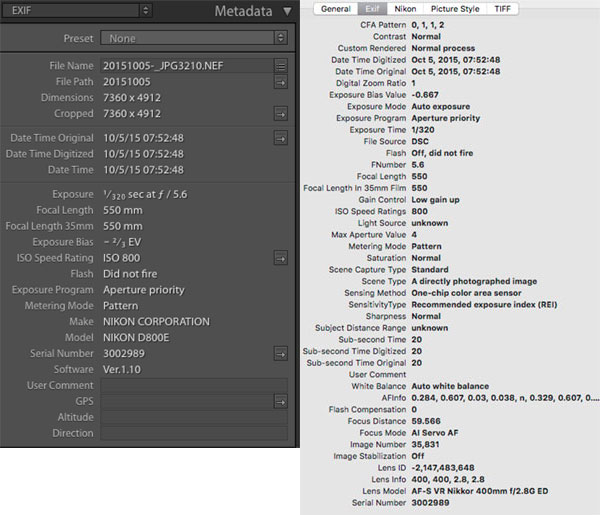Take back your EXIF data: What information is photo software discarding?
posted Monday, May 23, 2016 at 1:20 PM EST

You’ve probably seen a lot of information alongside your image files when you’re viewing them in an image editor. The EXIF data -- that stands for Exchangeable Image File Format, if you were wondering -- records a massive amount of information about your photos and how they were captured, including the basics such as shutter speed, aperture, ISO sensitivity, white balance and much more, but it also records a lot more information that you might never actually see.
Just because you don’t see it doesn’t mean it might not be useful, however, and a lot of data gets discarded when you process an image in a program like Adobe’s Lightroom or Photoshop among others. Writing for Petapixel, photographer Don Komarechka decided to put Lightroom to the test using an image shot with the Canon 1D X Mark II and Canon MP-E 65mm lens, to see what happened to the EXIF data after making some edits.
A taste of what vanished from the edited file includes the camera’s internal serial number, whether or not Live View was used, focus distance, whether or not spot metering was linked to the AF point, viewfinder warnings, autofocus micro adjustment settings, Auto Lighting Optimizer information, and High ISO Noise Reduction. Admittedly, much of that will probably never be useful to anyone, but some of it might be. To see the full list of lost data, check out the article.

If you want to see all of the EXIF data that your software isn’t showing you, give Phil Harvey’s free and opensource ExifTool software a try. I think it’s always better to have too much information than not enough, and ExifTool will ensure you have access to every bit of information hidden in your image files’ metadata.
To use ExifTool you need to go through a few initial set-up steps, so here’s a guide for how to use the tool.
(Seen via PetaPixel)